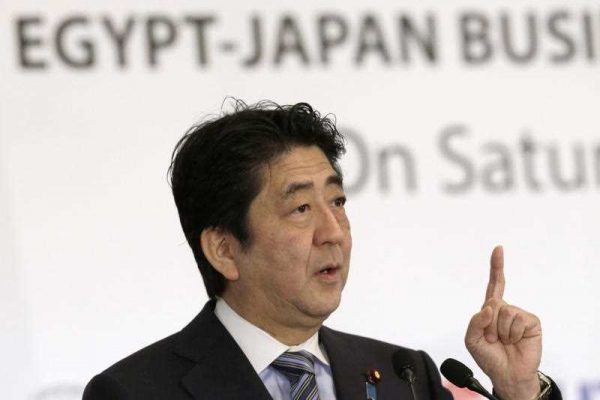In the recent election for Japan’s House of Representatives — which returned the governing Liberal Democratic Party (LDP) to power with a thumping majority — energy was relegated to a secondary issue. This is despite the fact that polling suggests a large segment of the Japanese population don’t trust the Abe government to apply the lessons of the Fukushima disaster to nuclear policy moving forward.
So, why was energy marginalised as an election issue?
One possibility is simply that the campaign was short. Prime Minister Shinzo Abe called a snap election and Japan has very short legally mandated campaigning periods. This made it hard for the opposition parties to generate concern about the LDP’s approach. But the government also used three strategies to manage the risk of energy as an electoral issue.
First, it ensured there was not a great difference between it and the opposition Democratic Party of Japan (DPJ) in electorally relevant time-scales. The DPJ’s former prime minister Yoshihiko Noda announced the restart of the first nuclear reactors at Ōi in 2012. But in the recent election, the DPJ pushed for respecting a 40 year limit on the operating life placed on existing nuclear units. They also proposed that no new nuclear units be built. This would ensure that, over time, nuclear power would cease to be a part of Japan’s energy mix. The DPJ further argued that existing nuclear units should be restarted only once they pass the stricter safety regulations implemented by the newly created Nuclear Regulation Authority.
But from the voters’ perspective, this may not have looked very different from the position adopted by Abe’s government. Unlike the DPJ, Abe’s cabinet has not rejected the long-term role of nuclear power in Japan. But the Basic Energy Plan, endorsed by Abe’s cabinet, proposes that the role of nuclear power should be reduced to the minimum amount necessary. While positioning nuclear power as an important baseload power source, the LDP has also avoided putting numbers on its share in the generation mix, relative to coal, natural gas, hydropower, and solar photovoltaics and other renewable power sources. This more politically sensitive decision will be made later this year.
The LDP’s second strategy was to transform the nuclear restart debate from a political issue to a technocratic one. Currently, the Nuclear Regulation Authority is responsible for determining whether the existing nuclear units meet new and more exacting standards. The LDP will only consider nuclear restarts when plants have passed this process.
The creation of the new safety authority was informed by concern that the previous Nuclear and Industrial Safety Agency was captured by the industry it was meant to regulate. But in political terms, transferring authority to a technocratic body over the key question of whether nuclear units are safe is useful politically, as it places the government at arms-length from this controversial decision.
Finally, the Abe cabinet has committed to changing its relationship with the deeply unpopular power utilities. The two have traditionally been close. But the LDP has forged ahead with a three-stage plan to remake Japan’s power market. The first step was to create a body to oversee energy flows between Japan’s regionally segmented power markets. Opening the retail market to full competition was the second step. These have already been enacted, and implementation plans are moving forward.
The third stage of this proposed change — and perhaps the most politically difficult — is separating the transmission grid from the operation of power plants and retail sales. Japan’s power utilities are vertically integrated and are virtual monopolies within their service areas. The LDP foundered 15 years ago when it attempted to reform the power sector. But Abe’s cabinet has just agreed to this change, and plans to put the legislation that will bring about this change to parliament in its current sitting. The largest and most influential power utility — the Tokyo Electric Power Company — has already announced plans to shift to a holding company structure in order to accommodate this change.
We are yet to see what this means for consumers’ power prices, Japan’s fuel import bills, and competition and innovation in the power sector. But by neutering energy as a policy area that is capable of swinging elections, Abe has demonstrated this approach works as a political strategy.
Llewelyn Hughes is Senior Lecturer at the Crawford School of Public Policy, the Australian National University and Research Director at GR-Japan.
This article is based on his chapter in the forthcoming edited volume Robert J. Pekkanen, Steven R. Reed, and Ethan Scheiner, eds. 2015. Japan Decides 2014: The Japanese General Election. London: Palgrave.


Lax of the author to forget to mention that Japan’s February 2014 election for Tokyo Governor was already fought on the issue of nuclear power, and that, at the very least, anti-nuclear politicians did not win.
“In mid-January, former Prime Minister Morihiro Hosokawa emerged as a second strong candidate with the backing of former LDP Prime Minister Junichiro Koizumi, with his platform focusing on opposition to the restart of nuclear power generation in Japan.”
The total votes received by the anti-nuclear crowd (Kenji Utsunomiya + Morihiro Hosokawa = 1,938,658) was 40per cent lower that the votes received by the pro-nuclear crowd (Yoichi Masuzoe + Toshio Tamogami = 2,723,844).
At the very least, a majority of voters agreed that there are far more pressing economic/diplomatic/social issues than opposing the restart of nuclear power generation in Japan.
http://en.wikipedia.org/wiki/Tokyo_gubernatorial_election,_2014